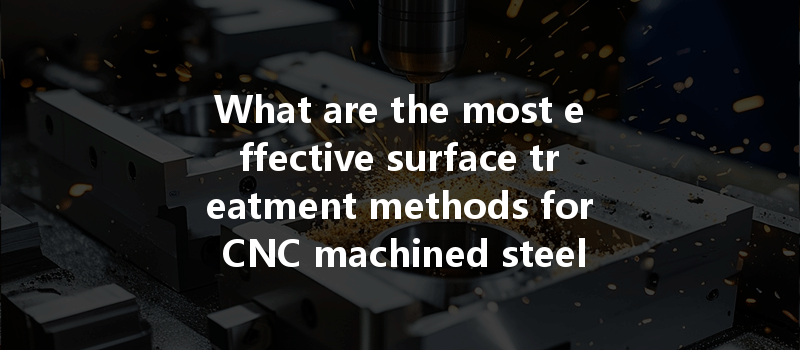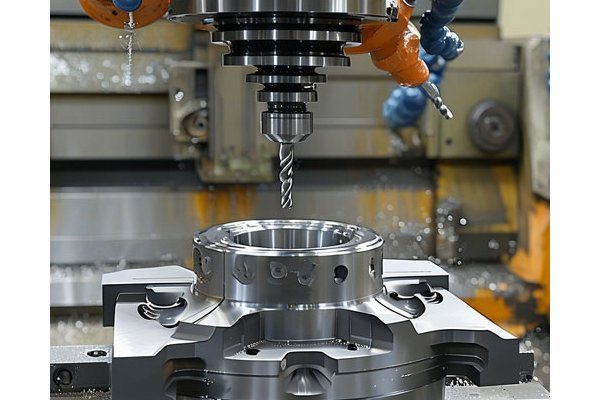CNC machining has revolutionized the manufacturing industry, enabling the production of highly precise and complex components. However, the journey from a raw piece of steel to a fine, finished product doesn’t simply stop at machining. One of the most critical stages of this process is surface treatment, which enhances the material’s performance characteristics such as corrosion resistance, wear resistance, and aesthetic appeal. Did you know that nearly 90% of all metal components undergo some form of surface treatment? This statistic underscores the importance of understanding various surface treatment methods and their effects on CNC machined steel parts.
Understanding Surface Treatment
Before diving into specific techniques, it’s crucial to grasp the role of surface treatment. The primary objectives of surface treatment include:
Types of Surface Treatment Methods
Considering the objectives outlined, many surface treatment methods fit the bill. Below, we explore some of the most effective techniques used in treating CNC machined steel parts:
Anodizing is an electrochemical process that converts the metal surface into a decorative, durable, corrosion-resistant anodic oxide finish. While commonly associated with aluminum, certain anodizing techniques can be adapted for specific types of steel alloys. This surface treatment not only protects against corrosion but also allows for various colorations and finishes, enhancing aesthetic appeal.
Benefits of Anodizing:
Applications: Aerospace, automotive, and decorative components.
Considerations: It’s essential to make precise adjustments to the anodizing process parameters to accommodate varying steel alloys.
Electroplating involves depositing a layer of metal onto the surface of an object through electrolysis. This method can enhance the properties of steel, such as corrosion resistance and wear resistance. Common plating metals include nickel, chrome, or copper, each offering different advantages.
Benefits of Electroplating:
Applications: Automotive parts, electrical components, and decorative items.
Considerations: The success of electroplating is reliant on proper cleaning and surface preparation of the steel part prior to plating.
Powder coating is a dry finishing process that uses fine particles of pigment and resin to create a hard finish on metal surfaces. Unlike liquid paint, which is applied in a wet state and must be cured, powder coating is electrostatically charged and is cured under heat.
Benefits of Powder Coating:
Applications: Outdoor furniture, automotive parts, and household appliances.
Considerations: Proper curing time and temperature must be monitored to achieve the desired finish and durability.

Plasma spraying is a high-energy process that involves the spraying of molten powders onto the substrate. It is used for depositing various materials, including ceramics, metals, and polymers, onto the CNC machined surfaces.
Benefits of Plasma Spraying:
Applications: Aerospace components, high-performance machine parts, and tools.
Considerations: Equipment and personnel can be significant investments due to the complexity of the process.
Sandblasting, or abrasive blasting, is a mechanical surface treatment where sand or other media are propelled against the surface at high speeds. This method effectively cleans and roughens surfaces, preparing them for further treatment.
Benefits of Sandblasting:
Applications: Automotive, aerospace, and manufacturing sectors.
Considerations: The type of abrasive material used should be selected carefully to avoid damage to the steel.
While not a surface treatment method in the traditional sense, vapor degreasing is a critical pre-treatment step that cleans surfaces thoroughly before applying any finishing processes. This involves the evaporation of a solvent, which subsequently condenses on the object to remove grease and contaminants.
Benefits of Vapor Degreasing:
Applications: Precision components in electronics, aerospace, and automotive.
Considerations: The choice of solvent is crucial for the compatibility with the specific types of steel.
Choosing the Right Surface Treatment Method
Selecting the appropriate surface treatment method depends on several factors:
The surface treatment of CNC machined steel parts is a crucial stage in enhancing their functionality, durability, and aesthetics. Through methods such as anodizing, electroplating, powder coating, plasma spraying, sandblasting, and vapor degreasing, manufacturers can achieve a protective and aesthetically pleasing finish that meets stringent industry standards.
Understanding these surface treatment technologies is not just an option; it’s a necessity for anyone involved in CNC machining, as the right choices can significantly impact the product’s performance and longevity. With the increasing demands for high-quality components in industries ranging from aerospace to automotive, investing in effective surface treatment methods can lead to substantial benefits.
By considering this essential aspect of manufacturing, readers are encouraged to reflect on the importance of surface treatments and how they can optimize their production processes in the CNC machining landscape. Embracing these technologies will not only enhance product performance but also contribute to sustainability and efficiency in manufacturing.






